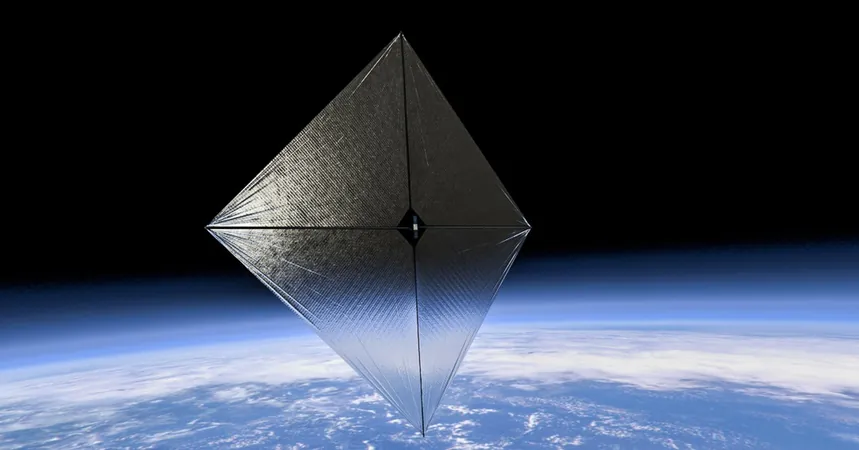
Unlocking the Secrets of Solar Sails and Comet Tails: How Sunlight Powers Space Exploration
2024-09-27
As we journey through the cosmos, a revolutionary concept is emerging that could transform our approach to space travel—solar sails. Much like the Age of Sail on Earth, where ships harnessed wind for exploration, spacecraft can now utilize the power of sunlight for propulsion, setting the stage for a new frontier in space exploration.
Recently, NASA has taken a significant step forward with the launch of the Advanced Composite Solar Sail System (ACS3), featuring a 9-meter-wide square sail that adapts its orbital trajectory using solar radiation as its driving force. This innovative method could soon replace traditional engines and fuel, demonstrating how smart engineering can solve problems once thought insurmountable.
While smaller solar sails like the ACS3 are a promising start, the future holds the ambition of much larger sails—imagine sails spanning 1,650 square meters! Although a project of this scale faced budget constraints in 2022 and was shelved, advancements in technology may turn this dream into reality.
It’s essential to understand the fundamental science behind solar propulsion. Unlike photovoltaic panels that convert sunlight to electricity, solar sails are reflective, ultra-light structures that capture momentum from solar radiation. But how does sunlight possess enough force to propel spacecraft?
The Science Behind Solar Pressure
Light interacts with matter in fascinating ways. When sunlight strikes a comet, it vaporizes ice and releases dust, forming the comet’s tail. This tail is not merely a trail; it is extended outward by sunlight's pressure, showcasing how light can physically push particles into space.
In fact, there’s an intriguing comet—Tsuchinshan–ATLAS—set to grace our skies this October, potentially visible to the naked eye. As it approaches the sun, its tail will grow, offering a spectacular celestial display while further illustrating the principles of solar pressure at work.
Light travels as electromagnetic waves, composed of oscillating electric and magnetic fields. These waves can traverse the vacuum of space, unlike sound or water waves, which need a medium to propagate. This unique property of light makes it an efficient means of propulsion in the void of space.
Harnessing Light for Propulsion
The interaction of light with charged particles reveals the power of electromagnetic radiation. When photons collide with particles, they impart momentum, which can be harnessed for propulsion. Although the force generated by sunlight is minuscule—roughly equivalent to the weight of a grain of salt—it remains a continuously available energy source. Over time, this force can significantly accelerate a spacecraft, allowing us to traverse vast distances in space without the need for fuel.
Such a paradigm shift in propulsion technology eliminates the limitations imposed by carrying traditional fuel and integrates an eco-friendly approach to space exploration. This could pave the way for potential missions far beyond our current capabilities.
As we look ahead to the arrival of Tsuchinshan–ATLAS, we are reminded of the beauty and mystery of our universe. The phenomenon of solar sails not only enhances our understanding of physics but also opens the door to futuristic space travel, making the once-implausible a tangible reality. Buckle up, space enthusiasts—our journey among the stars is just beginning!


 Brasil (PT)
Brasil (PT)
 Canada (EN)
Canada (EN)
 Chile (ES)
Chile (ES)
 España (ES)
España (ES)
 France (FR)
France (FR)
 Hong Kong (EN)
Hong Kong (EN)
 Italia (IT)
Italia (IT)
 日本 (JA)
日本 (JA)
 Magyarország (HU)
Magyarország (HU)
 Norge (NO)
Norge (NO)
 Polska (PL)
Polska (PL)
 Schweiz (DE)
Schweiz (DE)
 Singapore (EN)
Singapore (EN)
 Sverige (SV)
Sverige (SV)
 Suomi (FI)
Suomi (FI)
 Türkiye (TR)
Türkiye (TR)